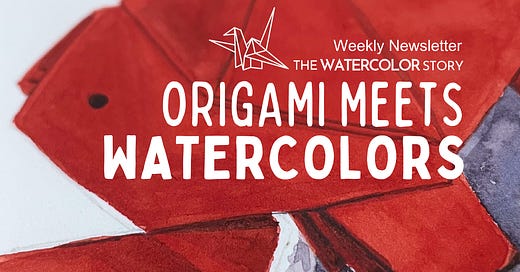Recently, I embarked on a new artistic journey that I’m eager to share with you.
As some of you may know, I love exploring different mediums and techniques in my work, and this time, I’ve been drawn to the ancient art of Origami.
The beauty of taking a simple, flat piece of paper and transforming it into something intricate and three-dimensional has always fascinated me, but I hadn’t fully appreciated how much there is to learn from it—until now.
Over the past few weeks, I’ve folded dragons, scorpions, elephants and even some abstract shapes. There’s a certain magic in the simplicity of origami. Each fold feels like a small moment of mindfulness, a pause to reflect on how small actions can lead to something beautiful. It’s a practice that requires patience, precision, and a kind of quiet concentration—qualities that have enriched my creative process in ways I hadn’t expected.
But the most exciting part of this exploration came when I started looking at my origami creations not just as objects, but as subjects for my watercolors. It turns out that these folded shapes make fascinating models for experimenting with light and shadows.

When I set up my first origami figure under a light, I noticed how the folds cast these delicate, intricate shadows, and suddenly, a simple piece of paper became so much more than its material. Each fold seemed to create its own unique play of light and dark, and I was struck by how this could transform my watercolor work. I’ve always loved painting textures and layering color, but this was different—it was like painting depth, capturing the contrast between a hard edge and the soft shadow it throws.
The process of translating those folds and shadows onto paper has been an eye-opening learning experience. I’ve found myself really focusing on how light interacts with form and how every tiny variation in the fold of the paper can affect the way shadows fall. It’s teaching me to see subtle gradations in light and dark, and to pay attention to those small, nuanced details that can make a painting come alive.
One challenge I’ve encountered is capturing the essence of a single-colored sheet of paper in watercolor. You would think that painting a one-tone subject might feel limiting, but it’s actually opened up a whole world of creative problem-solving for me. How do I express the complexity of folds, shadows, and light when there’s no variation in the color of the paper? The answer lies in layering transparent washes, building up the depth gradually, and playing with the contrast between light and dark.
Another interesting aspect is how the folds themselves become both the subject and the challenge. Every sharp crease, every tucked corner, creates a new dynamic for how the shadows interact with the surface. It’s an ongoing learning process, and I’ve enjoyed the sense of discovery that comes with each new piece I fold and paint.
For anyone looking to add a new dimension to their work, I highly recommend trying this combination of origami and watercolor. Whether you’re using it to explore light and shadow like I am, or simply as a way to meditate on the balance between simplicity and complexity, it’s a deeply rewarding process. Even if you don’t typically work with 3D forms, folding paper and then painting those forms can provide a new perspective on how light defines structure.
As artists, we’re always looking for ways to see the world differently, and for me, origami has become a fresh lens through which I can explore the relationship between form and shadow. I’d love for you to try it and let me know your experiences. It’s a great exercise to stretch your creative muscles and think about space, light, and color in new ways.
So, what are you experimenting with in your creative practice this week? Have you recently stumbled upon a new technique or process that’s sparking fresh ideas? I’d love to hear about it, and maybe we can exchange some tips or thoughts on how to keep the inspiration flowing.
Until next time, keep creating and exploring the art that makes you feel alive.








